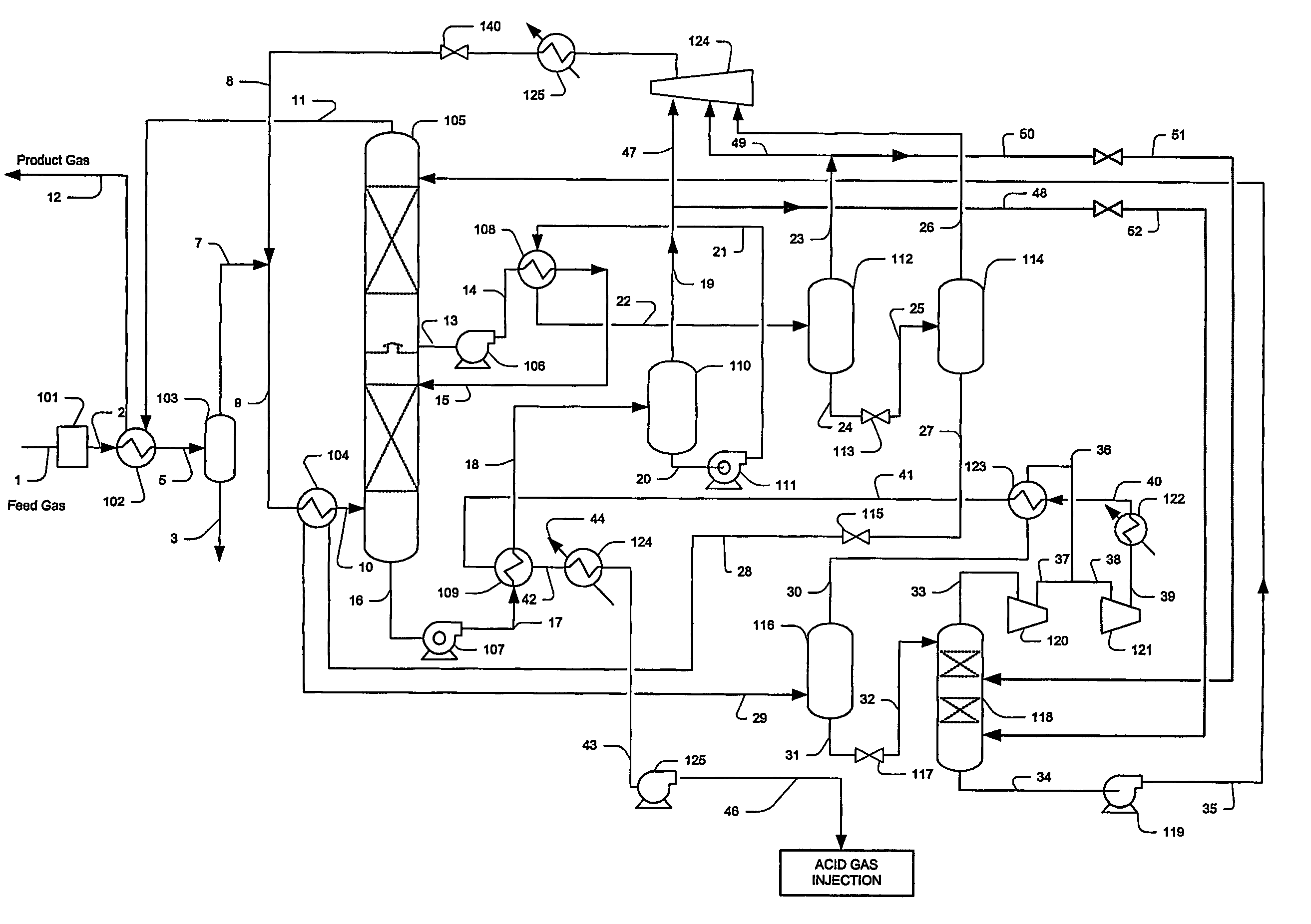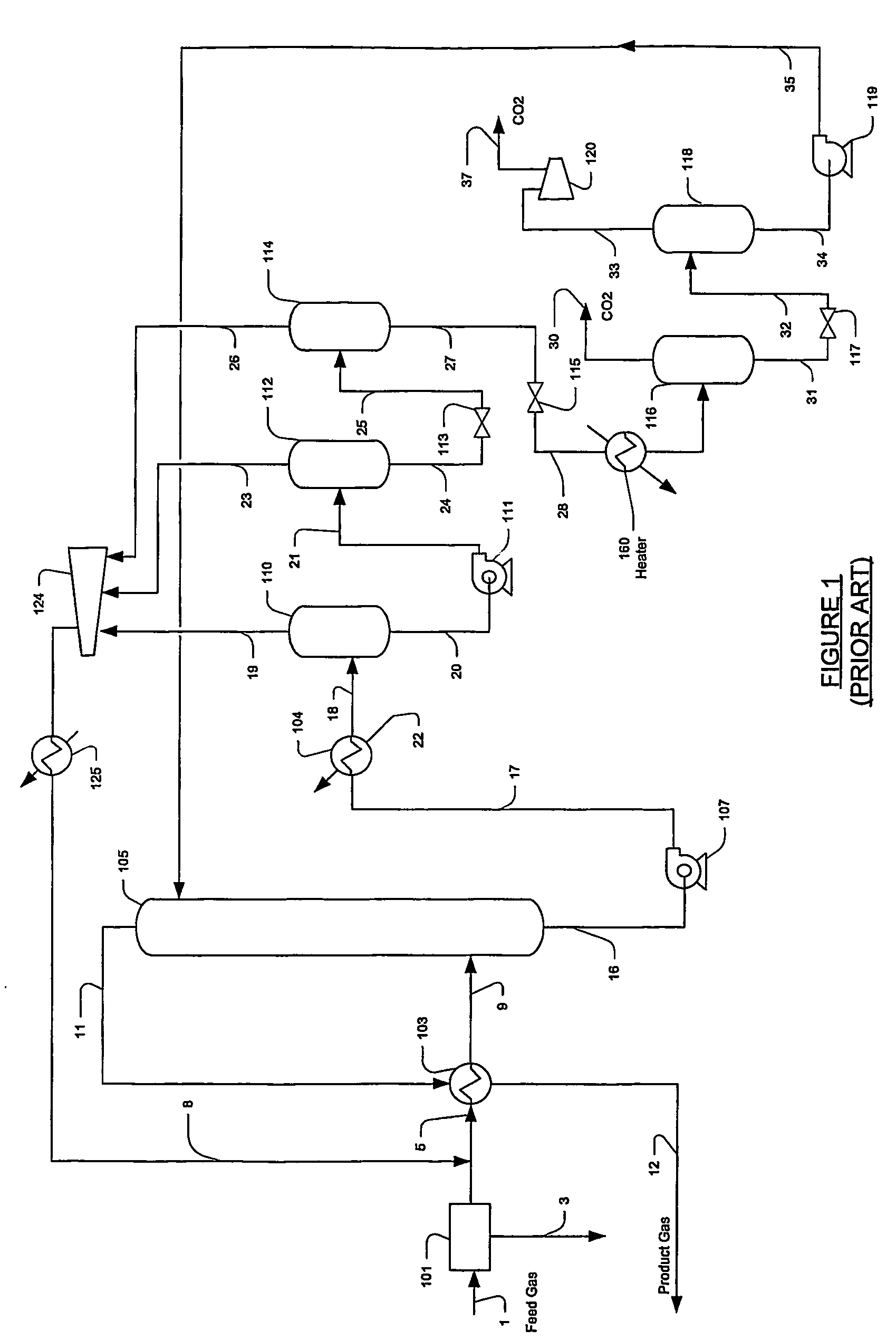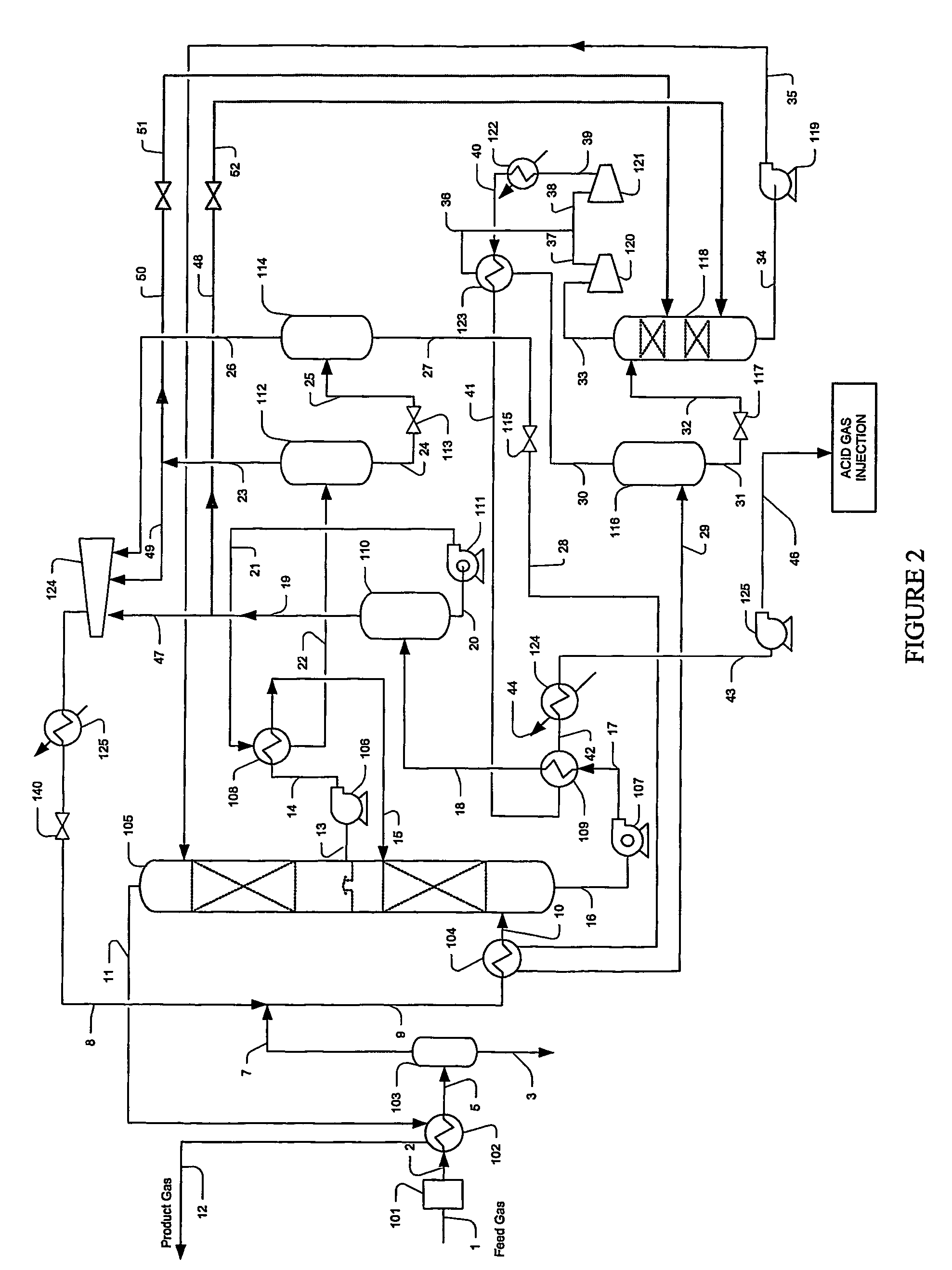Configurations and methods of acid gas removal
a technology of acid gas removal and feed gas, which is applied in the direction of liquid degasification, separation process, dispersed particle separation, etc., can solve the problems of uneconomical use, unsatisfactory use effect, and increase the cost of such operations
- Summary
- Abstract
- Description
- Claims
- Application Information
AI Technical Summary
Benefits of technology
Problems solved by technology
Method used
Image
Examples
Embodiment Construction
[0018]The inventors have discovered that acid gases, and particularly carbon dioxide, is removed from a feed gas comprising carbon dioxide and hydrogen sulfide in configurations and methods in which flashed gases from the feed gas are employed to strip hydrogen sulfide from a lean physical solvent that is employed to also remove carbon dioxide.
[0019]In particularly preferred configurations, it is contemplated that a stripper operates under vacuum pressure (typically between about 1 to 10 psia), wherein the stripping gas is supplied from the high pressure and medium pressure flash in the solvent regeneration process. It is further preferred that the conditions in the high pressure and medium pressure flash and the quantities of the flashed gases are preferably selected such that the flash gases contain mostly light hydrocarbons and some carbon dioxide, but are substantially free (i.e., less than 1000 ppm, typically less than 100 ppm, and more typically less than 10 ppmv of hydrogen s...
PUM
| Property | Measurement | Unit |
|---|---|---|
| pressure | aaaaa | aaaaa |
| mol % | aaaaa | aaaaa |
| temperature | aaaaa | aaaaa |
Abstract
Description
Claims
Application Information
 Login to View More
Login to View More - R&D
- Intellectual Property
- Life Sciences
- Materials
- Tech Scout
- Unparalleled Data Quality
- Higher Quality Content
- 60% Fewer Hallucinations
Browse by: Latest US Patents, China's latest patents, Technical Efficacy Thesaurus, Application Domain, Technology Topic, Popular Technical Reports.
© 2025 PatSnap. All rights reserved.Legal|Privacy policy|Modern Slavery Act Transparency Statement|Sitemap|About US| Contact US: help@patsnap.com



